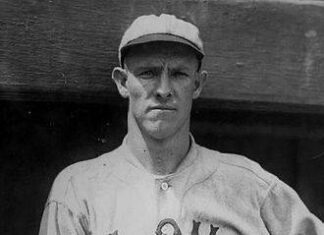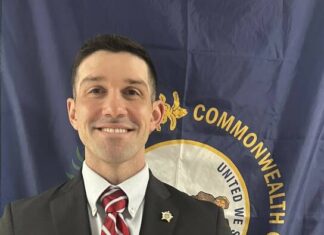HIXSON’S HOARDINGS
If you walk down the hall leading to the Calvert Gallery in the Kentucky Gateway Museum Center, there is a small exhibit dedicated to this month’s ‘Read On’ Literacy Campaign, The Book Woman of Troublesome Creek.
You will see pictures that give you an idea of life during the Great Depression- a time of political and economic struggle across the world. President Herbert Hoover was unable to stop the free fall of the American economy. His successor, “Franklin Delano Roosevelt, was elected president in a landslide in 1933 with campaign promises to fix the economy. Roosevelt acted quickly to create jobs and stimulate the economy through the creation of what he called “a New Deal for the forgotten man”—a program for people without resources to support themselves or their families. The New Deal was formalized as the federal Works Progress Administration, an umbrella agency for the many programs created to help Americans during the Depression, including infrastructure projects, jobs programs, and social services.”
In 1935, Roosevelt created the Federal Art Project as the agency that would administer artist employment projects, federal art commissions, and community art centers. Some artists felt that art could address the social and political concerns of the time and Roosevelt saw the arts and access to them as “fundamental to American life and democracy.” He believed the arts fostered resilience and pride in American culture and history. The art created under the WPA offers a unique snapshot of the country, its people, and art practices of the period. There were no government-mandated requirements about the subject of the art or its style. “The expectation was that the art would relate to the times, reflect the place in which it was created, and be accessible to a broad public”. The WPA intentionally seeded arts programs and supported artists outside of urban centers. In so doing, “it introduced the arts to a much more diverse swath of Americans, many of whom had previously never seen an original painting or work of art, had not met a professional artist, nor experimented with art-making. The art produced through government programs pictured both the hardship of the period and a vision of a better America. triumphs such as the construction of vast dams to provide flood control for farmlands and generate hydroelectric power, the expansion of the electrical power grid across the country, and conservation and agriculture programs to restore productivity to areas of the country swept by dust and wind storms.” (The museum has a collection of sculptures produced by artists of the WPA to teach history in the classrooms.)
The New Deal federal dollars enabled an explosion of artistic endeavors from painting to music, to theater to architecture. It gave artists both federal recognition and the funding and space to work out new cultural forms. You saw Art Deco, Cubism by Pablo Picasso, Surrealism by Frida Kahlo that became catalysts for artists that celebrated the country’s past and its character and promoted a sense of national identity during a difficult time and yielded art that people could understand and appreciate. FDR was emphatic that art in America belonged to the people and wasn’t property of a select group or a class of people. One of the most noted photographers of the time, Dorthea Lange, perfectly captured the worry and desperation of a woman who faced an uncertain future as a homeless American citizen during the Great Depression in her “Migrant Mother” (1936). Raphael Soyer’s lithograph “Working Girls Going Home” showed a woman’s tired face in New York City on a bus or the subway. The other faces in the art don’t reveal details and some are in shadow “giving a sense of anonymity and sameness”. Tom Coe will be streaming live on KYGMC’s Facebook Saturday, Oct. 17th to discuss the WPA Post Office Murals whose objectives were to secure artwork of high artistic standards for public buildings where it was accessible to all people.
Thousands of families who had purchased much of their household equipment on credit, gave up their cars, vacuum cleaners and furniture, but kept up payments on their radios. “In some areas, neighbors would gather from miles around to listen to a favorite program playing on the one set in town.” In the 1930s, big bands and swing music were popular, with Duke Ellington, Benny Goodman, and Glenn Miller popular bandleaders. Besides listening to the big bands on the radio, old genres of entertainment such as vaudeville and comedy routines were adapted for radio. The Jack Benny Show (1932), Buck Rogers in the Twenty-fifth Century (1932), Amos ‘N’ Andy, Lowell Thomas’s nightly radio show and Orson Welles’ War of the Worlds (1938) were just some of the things you could hear on the radio at the time. Stars of the stage, including theater stars and musical groups became stars of radio such as Edgar Bergen, Bob Hope, Kate Smith and Guy Lombardo. As radio became more sophisticated, new areas of skill and talent emerged, such as sound effects. Sound effects artists who had been put out of work with the talkies found new jobs providing effects for radio that would guide the creation of images to your mind just as you visualize while you read. “An estimated 60 million people listened to President Roosevelt’s first fireside chat (1933) about the bank crises.” (The run on banks ceased, they say, as Americans chose, on FDR’s advice, to trust them.) “In 1935, when FDR started the Rural Electrification Administration, only 10 percent of the nations farmers had electricity.” As electricity spread so did radio.
The Federal theater Project was a new approach to unemployment in the theater profession. “only those certified as employable could be offered work, and that work was to be within the individuals defined skills and trades.” Hallie Flanagan, director of the FTA, said for the first time in the relief experiments of this country, the preservation of the skill of the worker, and hence the preservation of his self-respect, became important. Many actors, technicians, stagehands had suffered when movies had replaced stock, vaudeville and other live performances. “Sound motion pictures displaced 30,000 musicians.” Flanagan emphasized the development of local and regional theater. In New York City, the Lafayette theater and the Negro Youth Theater were dedicated to the Harlem community with the intention of developing unknown dance and theater artists. Living Newspapers were plays written about current events from news articles and were popular at the time. “The legacy of the Federal theater Project can also be found in beginning the careers of a new generation of theater artists. Arthur Miller, Orson Welles, John Houseman, Martin Ritt, Ella Kazan, Joseph Losey, Marc Blitzstein and Abe Feder are among those who became established.”
With the addition of sound, movies became increasingly popular. Our very own Russell theater opened in 1930 with the first showing of Eddie Cantor’s Whoopie. Comedies, gangster movies and musicals helped people forget their troubles. Nick Clooney once said he went to the movies -not to run away from anything, but to run to something. “During the 30s, around 400 musicals and musical films were presented.” Stage shows adapted for films including the world-famous Ziegfeld Follies. Busby Berkley musicals choreographed dance sequences as thousands of beautiful girls waltzed, tap-danced and even swam while singing wearing spangled costumes. Fred Astaire and Ginger Rodgers made us all want to dance and film stars like Greta Garbo, John Barrymore, Gary Cooper and Bette Davis filled the screen. My favorite 1930 films were the swashbucklers with Errol Flynn and Olivia de Haviland. (Who can forget Captain Blood and The Adventures of Robin Hood?!) Shirley Temple was America’s Shining light during the depression. Her dancing, singing, dimples and smile, her cuteness and charisma “made her the number-one box office draw from 1935 to 1938”, beating out established stars such as Clark Gable and Bing Crosby.” According to John Kasson’s The Little Girl Who Fought the Great Depression: Shirley Temple and 1930s America, Hollywood crafted Temple’s movies specifically to reassure movie audiences that the depression would end and their futures would be much better. “Her films, products, and endorsements stimulated the American consumer economy at a crucial time, so much so that to some she appeared to be a relief program all by herself.”
Not everyone suffered or even lost money during the depression. Philanthropy accelerated in the 1930s as some of those who retained wealth gave to charities to aid the unfortunate and others gave to the arts to rescue cultural institutions that struggled amidst the economic decline. Museums formed during that time, such as The Seattle Art Museum as a gift to the city from art collector Richard Fuller and his mother Margaret. Other museums include the Museum of Science and Industry in Chicago, initially endowed by Juluis Rosenwald, president of Sears Roebuck Company and philanthropist in 1933. The Lebanon School building project with aid from the Julius Rosenwald Fund and other philanthropists provided quality education to African American communities. The Rosenwald School in Mayslick was part of that project. Other endeavors were the Pioneer Village in Salem Mass. In 1930, and the Montreal Botanical Garden founded in the height of the Great Depression by Mayor Camillien Houde to educate the public in general and students of horticulture as well as to conserve endangered plant species.
If you haven’t gotten the book, yet, you may pick one up at the museum, Mason County or Fleming County libraries. Read it and have a conversation at home to understand the Great Depression and the federal governments response to it. Recession and job loss- these things are happening now. The last eight months have presented extraordinary challenges to both American people, our public institutions and our businesses. Many are wondering whether our government is up to the challenge to solving these crises, and there is no shortage of dark predictions about the future. America was built on the resilience and ingenuity of its people. We have survived hard times before-and I am confident they will this time, as well.
In the meantime, enjoy the arts as Tom Coe talks about the WPA Post Office Murals Saturday, Oct. 17 at 10:30 a.m. live on Facebook and KYGMC presents Kentucky Humanities, Rachel Lee Rogers as Jean Ritchie: Damsel with a Dulcimer at the Maysville Country Club, Oct. 22 at 6:30 p.m. (Books provided in part by The International Paper Foundation, The Hayswood Foundation and the Charles E. and Elizabeth Scripps Foundation.)
Readers may email questions to [email protected] @ Kentucky Gateway Museum Center, Maysville, KY





